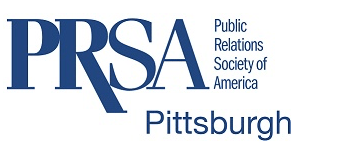Freeze-frame: The Importance of the Black Narrative
by Charlene Payne
Diversity and Inclusion Chair
“When you picture Black people – what images initially come to mind? If you don’t see patriots, fathers, graduates, and business owners, perhaps you should check what’s in your frame”
It was an honor to attend the 2022 MLK Keynote Address given by journalist Soledad O’Brien at Carnegie Mellon University. I welcomed the opportunity to see and listen to a woman of color who has excelled in her industry and was open to share her insights and experiences in front of and behind the camera.
There was a point in her presentation where she defined a practice that has deliberately berated people of color, more specifically Black people. The practice is called framing the narrative or media framing and it has the ability to be a great disservice to the black and brown communities when used incorrectly. The International Center for Policy Advocacy says:
“Frames are the stories we use to make sense of the complex world and through
socialization in our communities, they become part of our identity and ultimately
our “common sense”. This core attachment to these stories means that they can
be easily triggered by a single picture, a work or phrase, a metaphor or story
which lead us to our full story on the nature of the problem, who’s to blame
and the possible solutions.”
For example, you have two high school athletes that win college scholarships. One athlete is Black and the other is white. As media characterizes each scholarship recipient, the Black athlete is described as living in a neighborhood full of drug activity, having a single-parent home, on welfare BUT won the award. The white child is described as having a doctor and a lawyer as their parents, performs community service and is a hard worker AND won the award.
We must ask ourselves, was the Black student’s parent a lawyer or doctor? Was it necessary to share how household bills were paid? Do we know whether or not the white student performed community service once and never went back to help communities? Were the white parents on their fourth or fifth marriage? All of these questions point to unnecessary information that stem from framing the narrative poorly.
Media framing is not suggesting the reporting of inaccurate information. It refers to bringing both parties into a positive or negative light. In our case, both athletes deserved a positive narrative frame – they won scholarships! Unbalanced narratives breed stereotypes that have the power to shape the minds of millions incorrectly.
Thank you, Soledad O’Brien, for shedding light on the importance of media framing. Being Black in America isn’t easy. We have to courageously fight for our truth. Yet we are thankful for additional champions like Ida B. Wells, Mary Ann Shadd, Carl Rowan, Lerone Bennett, Jr., Gwen Ifill, Ed Bradley, Charlayne Hunter-Gault, April Ryan, Clarence Page, Lester Holt, Deborah Roberts, Jonathan Capeheart, Tony Brown, Tamron Hall, Ta-Nehisi Coates, Gail King, Joy Reid, and Oprah Winfrey who fought and still fight for all of our stories.
Stay Tuned
PRSA Pittsburgh D&I Committee will be continuing the conversation with Fatou Barry of PR Girl Manifesto. She’s carrying the torch to make sure her community of over 40,000 PR professionals can use their ability to transform the industry and change the narrative, creating equitable and inclusive opportunities.
D&I Toolkit
PRSA Pittsburgh created a D&I Toolkit to assist local PR and communications professionals in developing relationships with diverse communities and committing to creating a future of equitable and inclusive opportunities for all in the region.





Leave a Reply
Want to join the discussion?Feel free to contribute!